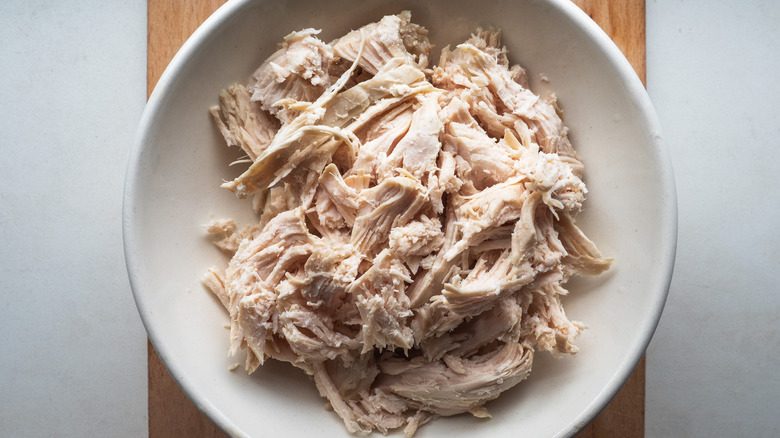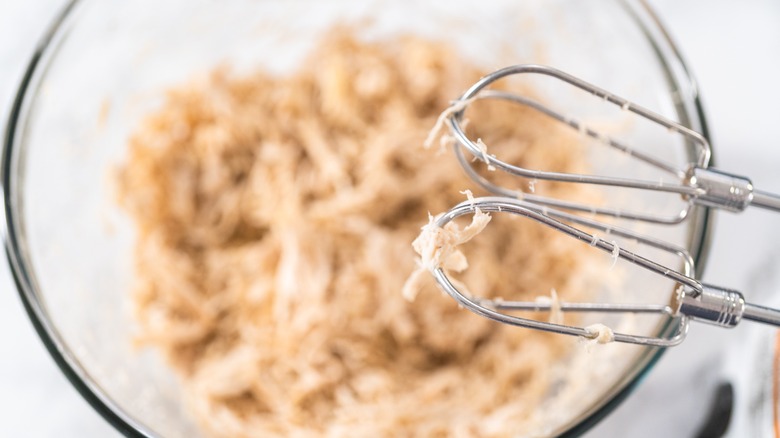The Easy Fix To Save Time And Energy When Shredding Meat
Armed with two forks, you may be ready to pick apart your freshly-cooked meat. And while you could spend the next 10 minutes or so pulling out deliciously tender, sauce-worthy shreds for pulled pork, tacos, or chicken salad — there's a better way. By using your stand mixer, you can have perfectly shredded meat in under a minute, and you don't even need an extra attachment. It's one of many untold secrets about your KitchenAid mixer.
Simply cut your meat into chunks and place those in the bowl of the machine, working in batches if needed. Optionally, you can add a small amount of cooking liquid to help the attachment move more smoothly through the protein. Attach the flat beater, sometimes called a mixing paddle, and set your mixer to its lowest speed. Your meat will start to pull apart in seconds, so watch it closely and stop mixing when it reaches your desired consistency.
For long, tender strands that resemble hand-pulled shreds, start with hot, freshly cooked meat, as the muscle fibers are tender and easy to separate. You can also use your stand mixer to shred leftovers, like a rotisserie chicken that you've deboned. Keep in mind that starting with chilled meat will give you a more coarse shred, as the fibers will have shrunk and become compressed together.
How to shred meat without a stand mixer
Don't have a stand mixer? There's still no need to resort to the archaic double-fork technique. If you have a hand mixer, you can use it similarly, by setting it to low speed and using it to pull your freshly cooked meat into savory strands. In fact, you can use a hand mixer to shred meat while it's still in the pot, slow cooker, or pressure cooker instead of placing it in a separate container. That way you'll have one less bowl to wash later. A food processor can also be used to break down meat for tacos or sandwiches, but because of the blades, you'll end up with a finely shredded result.
Whether you're using a mixer or a food processor, though, it's important to work fast. Overworking your meat can result in an unpleasant, super-fine texture that clumps together and dries out quickly. What you're looking for is a pulled-apart consistency with long and tender, well-defined strands.


